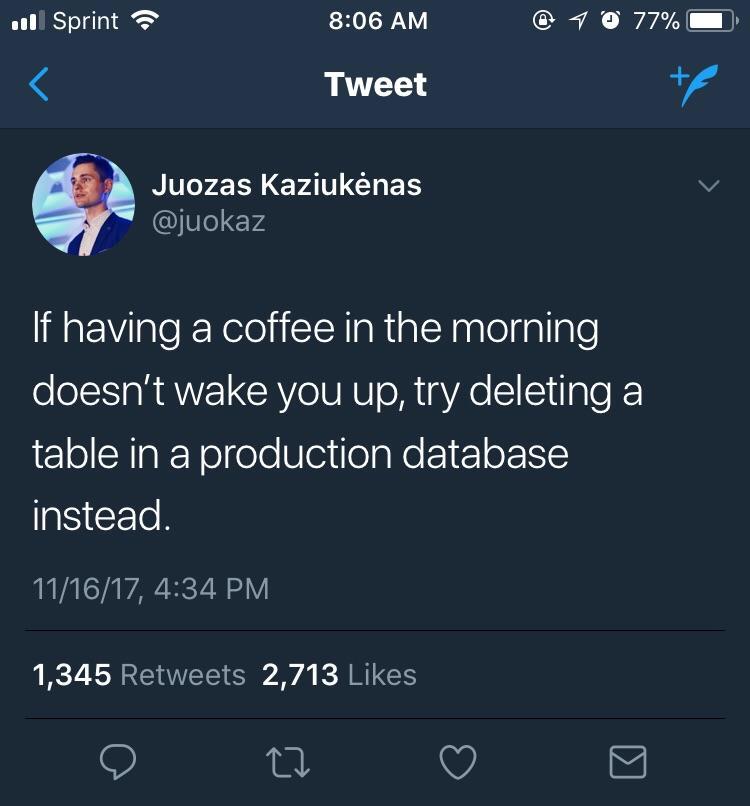Join devRant
Do all the things like
++ or -- rants, post your own rants, comment on others' rants and build your customized dev avatar
Sign Up
Pipeless API

From the creators of devRant, Pipeless lets you power real-time personalized recommendations and activity feeds using a simple API
Learn More
Related Rants

 Oh sh*t
Oh sh*t Hacking yourself.
Hacking yourself. I am so glad that i learned at middleschool how to use excel😂
I am so glad that i learned at middleschool how to use excel😂
We use Sequelize. This is how we do database structure changes:
- I create/change a model in Sequelize, and let it change my local database, then I do work on that
- I push the new code to a remote branch
- my boss/CTO/lead dev then manually creates/changes the relevant table(s) in our staging database
- I finally merge the branch I originally developed into the remote branch
- boss checks that everything is working
- at last, boss does the same process of modifying/creating tables in production database
- finally, staging code is merged into main
So right now:
- I'm changing a feature, forgot I was editing in the main branch
- go ahead and create a remote branch for it, pull locally, checkout local version of newly created branch
- try to run code
- oops, there's a missing column in one of my local database tables
- ask for boss for SQL script that will create the missing column and potentially add more data or whatever
- waiting for boss to respond
H-how can we improve this process? Boss has talked about us moving to use migrations but we never ended up doing it. I don't know much about migrations either. This is gonna suck so hard.
rant
database
hell